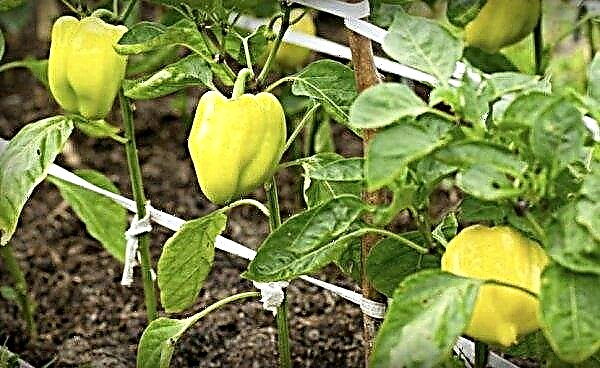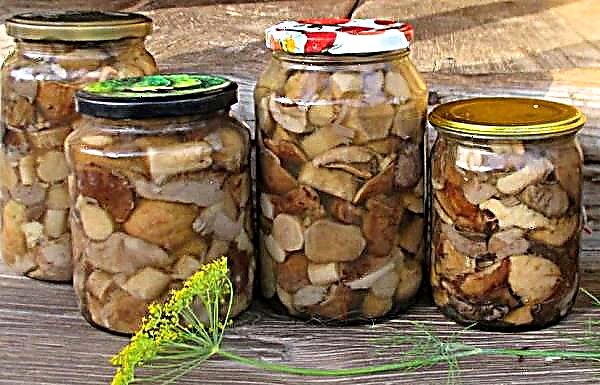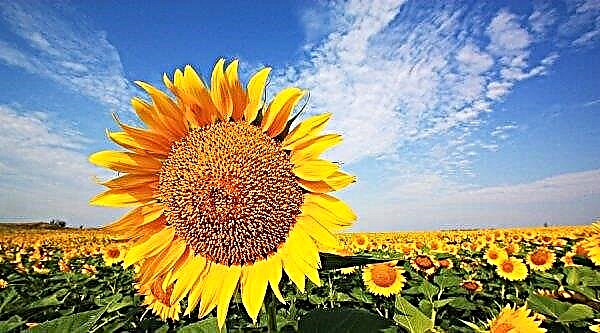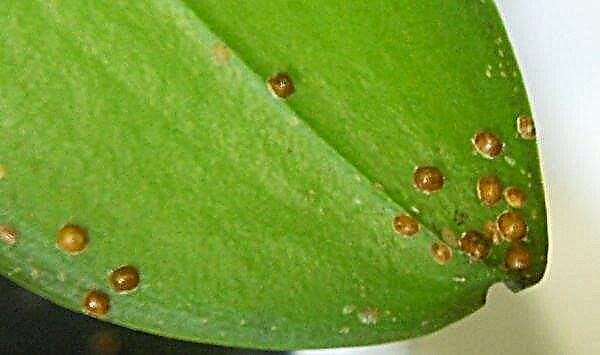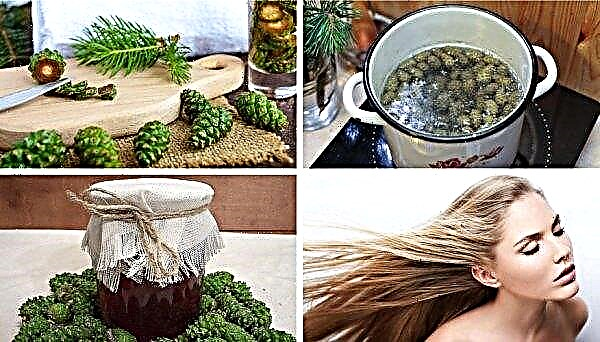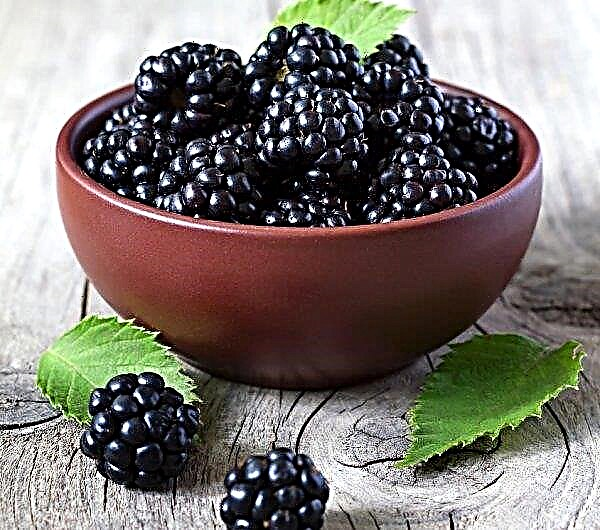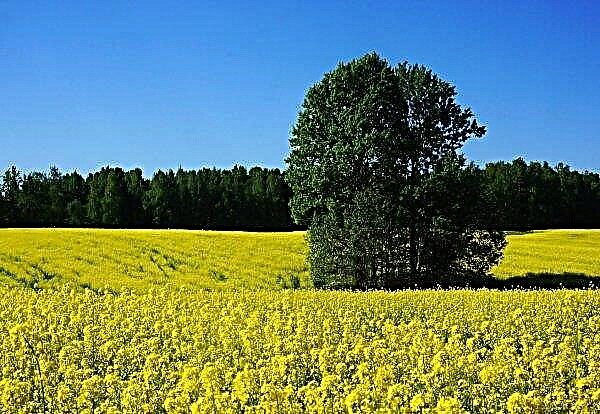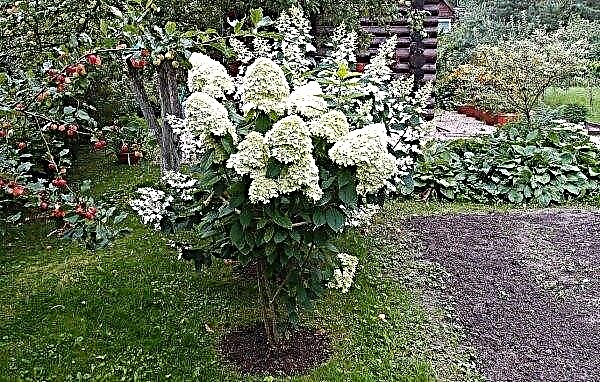Among the large number and variety of roses, musky roses began to slowly but surely occupy leading places, due to their external beauty, versatility in use, as well as the undemanding care of them.
Plant Features
Musk rose is an ornamental plant that originated in India and South China. Their features include: rapid growth, constant flowering, and the number of flowers during the next flowering does not decrease, but, on the contrary, increases. The flowers are small with a strong rich aroma, reminiscent of the smell of musk, bloom almost simultaneously, lush bushes reaching sizes up to 2 m.
Flowers form large brushes. The smell is not emitted by the petals themselves, but by the stamens of the flowers. Flowering begins from the top and goes to the bottom. It is recommended to plant them behind the flowerbed, because the effect is created from afar, and not close. Basically, the varieties are unpretentious, well tolerate low temperatures, immune to diseases and pests.
The ancestor of the musky rose called Trier, was a German breeder of the early twentieth century Peter Lambert. Later, his work was continued by breeders Thomas, spouses Bentall and the couple Pemberton.
Did you know? Varieties of musky roses, bred in our time, no longer exude a musky smell, but, for example, the smell of an apple or banana.
Main varieties
Below are the most common varieties of musky roses.
RahRah
It is a bush covered with white semi-double flowers. The buds are elongated, cream-colored, on outstretched legs. Inflorescences are large up to 30 flowers. Branches up to 4 m. The leaves are dark green.
Cornelia
It has bushes up to 1.6–1.7 m in size. The flowers are small, double, bloom in large numbers. The buds of bright red color when blooming become pink-apricot. Petals are wavy. Large brushes, no spikes on the shoots.

Ballerina
It is considered one of the most popular varieties of musky roses. It blooms in small simple flowers with a diameter of 3-5 cm, light pink in color, the center is white. Under the influence of the sun, the pink color fades. The bushes stretch up to 1.5 m. Leaves with a glossy sheen, there are no thorns on the stems. The variety blooms long and plentifully. Frost resistant.

Mozart
The flowers are white at the base, framed by a wide dark pink border that whitens in the sun. Inflorescences grow large, about 50 pieces. Branches up to 3 m long. Leaflets are small. Bushes are spreading and powerful.
Felicia
Large bushes up to 2 m in size. The variety is resistant to disease. Has the largest flowers, blooms longer than all species. Terry flowers, petals are large, cream-colored at the base, pink-apricot at the edges. On the stems there are long spikes, the leaves are dark green, shiny.

Buff beauty
Represents bushes with shoots up to 2 m. Flowers in diameter up to 10 cm, terry, bright orange. Inflorescences form large and loose. The leaves near the stem are reddish, dark green towards the end.

Bouquet parfait
Bushes up to 1.5 m high, up to 1.3 m in diameter. Creates inflorescences in the form of dense balls. In the center of milk color, along the edges with a pink rim. Resistant to disease.
Did you know? In French cooking, there is a recipe for making a fried pig with scented petal of musky roses in the tongue.
Neige dEte
In the form of cup-shaped white flowers, yellow stamens in the middle. The variety perfectly tolerates frost, the flowers do not deteriorate from the effects of rain.
Alden biesen
Forms inflorescences in the form of a pyramid with small pink flowers. After flowering, they do not fall, but turn green, giving the impression of hydrangea. Suitable for creating compositions in dry form.
Bukavu
Bushes up to 1.5 m in size. Create simple red flowers with a white center, which bloom very plentifully. The edges of the petals are wavy. Do not fear the rain.
Dinky
Straight bushes up to 1.2 m in size. The flowers are saturated pink in color, form huge brushes. They tolerate rain well. The leaves are dark green, shiny.
Havenley pink
The plant grows in size to 1.4 m, forming an upright bush. The flowers are strong double, pale pink. Big brushes in the form of pyramids. It tolerates frosts.

Schwerin
It differs from the rest in powerful bushes with spreading shoots. Leaves are dense with a glossy sheen. The flowers are medium up to 5 cm, saturated cherry color. Inflorescences are small.
Moonlight
Strong enough and hardy grade. The flowers are apricot-pink, the buds are copper-yellow. In inflorescences of 4-6 pieces. The leaves are thick, shiny, dark green. Bushes up to 2 m in size.
Conditions for growing musk roses
Musk roses belong to unpretentious plants, but still you need to pay attention to some features that arise when planting seedlings in flower beds and caring for the established bushes.
They include:
- the place you need to choose is sunny, you can slightly shaded, but on a hill;
- Avoid drafts and strong winds, from which shoots can break.
Rules for planting rose seedlings
Planting seedlings does not require much effort and consists of the following actions:
- seedlings of musky roses can be planted in spring, summer or autumn, but it is best in the warm season so that the plants have time to take root;
- it is necessary to dig a hole measuring 60 × 60 × 60 cm;
- add peat (2 buckets), sand (1 bucket), earth (3 buckets) to the bottom of the pit;
- to establish a sapling on the formed tubercle, spreading the roots;
- pour water and fill it with earth;
- can also be watered after the plant is buried;
- mulch root zone;
- planted at a distance of 1.5–2 m from other flowers.
Important! In spring and autumn, seedlings are planted with an open root system, and in summer — with closed.
What care is required
Caring for musk roses includes the following activities:
- watering - must be regular. It is necessary to ensure that the earth around the bush is slightly moist, but avoid stagnation of water, from which the root system will rot;
- loosening - Be sure to carry out after watering to supply the roots of the plant with air and to avoid the appearance of fungal diseases. It can be carried out together with hilling, so roses are better rooted;
- weed removal - is an integral part in the care of musk roses. Weeds must be removed permanently, as they can be a source of disease and adversely affect the growth of the bush itself;
- top dressing - it consists in the fact that after weak pruning, the bushes are fertilized with ammonium nitrate (1 tbsp.spoon per 10 liters of water), after 10-12 days the same top dressing can be repeated, another 10-12 days before the bud formation begins, enter the next fertilizer of calcium nitrate (1 tbsp.spoon per 10 l of water), again after 10-12 days, fertilize with Kemira or Kristallin preparations (1 tbsp.spoon per 10 l of water);

- pruning - should not be strong. With high pruning, roses begin to bloom earlier. It consists in removing blooming inflorescences, after which new flower-bearing shoots will grow and the next flowering will be more abundant than the previous one. This should be done until September, and then left to form fruits. When the bush reaches 3 years of age, in spring it is necessary to trim the old shoots to the base, so new branches will appear. This procedure must be done annually to rejuvenate the bush;
- preparation for winter - consists in carrying out hilling of the root zone to a height of 25-30 cm. Then the branches are bent to this level, the foliage is removed, the bush is treated with iron sulfate (300 g per 10 liters of water) and covered with a film or branches of conifers.
Important! Musk rose can be propagated using cuttings and bends.
Combination with other plants
Musk roses can be planted singly or in composition with other plants, such as geraniums, cereals, clematis, sage, with ornamental shrubs: barberry, turf, spirea, etc. Combine the colors to your liking and taste. The main thing to consider is that these flowers form large sprawling bushes, so you need to leave enough space around them. They also look great in the background, in the form of a hedge or a flowering arch.
Given all the above advantages of these beautiful flowers, the owners of summer cottages or flower beds will not regret the purchase of musky roses, which will delight them with lush and long flowering until late fall.



